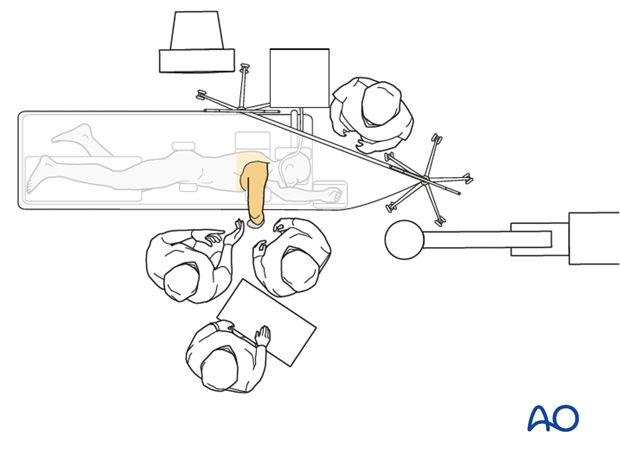Lateral position
1. Introduction
Posterior plating, retrograde nailing and external fixation may all be performed in the lateral position. This position may also be used for exploration of the radial nerve.
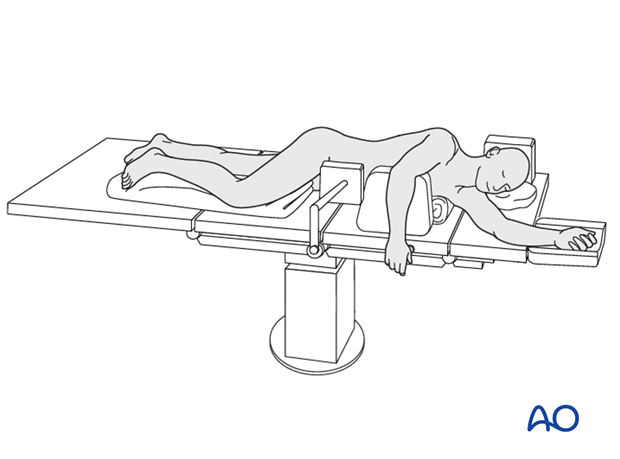
2. Preoperative preparation
Operating room personnel (ORP) need to know and confirm:
- Site and side of fracture
- Type of operation planned
- Ensure that operative site has been marked by the surgeon
- Condition of the soft tissues (fracture open or closed)
- Implants to be used
- Patient positioning
- Details of the patient (including a signed consent form and appropriate antibiotic and thromboprophylaxis)
- Comorbidities, including allergies
3. Anesthesia
- General anesthesia
- Local nerve block
- Combination of nerve block and light general anesthesia
4. Patient and C-arm positioning
Secure the patient’s body with padded side supports. Add an additional pad under the thorax to avoid axillary nerve compression injury in the contralateral shoulder. Confirm that there is no pressure on this shoulder.
Pearl: Positioning the patient on a vacuum mattress helps to keep him stable.
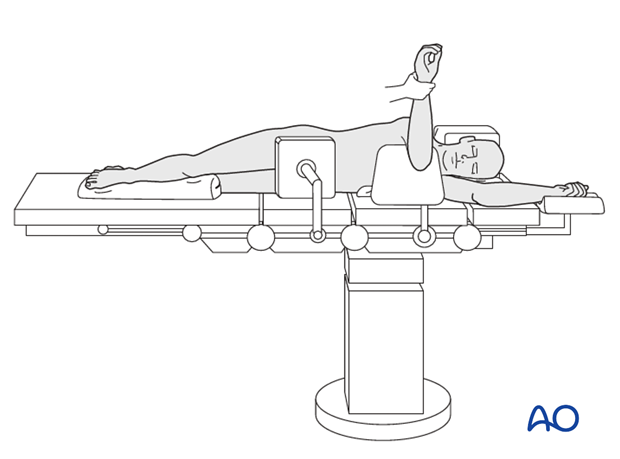
Abduct the operated arm across the body with the shoulder at 90º, and over a custom-made support or bolster with appropriate padding.
It should be possible to straighten and bend the elbow to at least a right angle.
To allow adequate access for imaging, position the patient as far as possible toward the side of the table from which the arm will be accessed.
Always ensure the anesthetist is satisfied with the position and support of the patient’s face and has adequate access to the airway at all times.
Take great care with the soft tissue and skin pressure points, particularly in the elderly.
Ensure there is adequate access for imaging before disinfecting and draping.
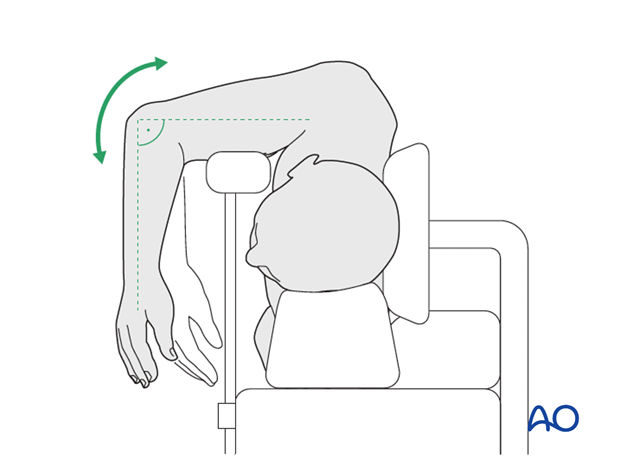
5. Skin disinfecting and draping
During disinfecting and draping make sure the shoulder is not too extended, particularly in elderly patients. It is often useful to elevate the table for this part of the preparation to make it easier for the assistant and then adjust the height to suit the surgeon.
Disinfect the exposed area from the shoulder to the hand including the axilla with the appropriate antiseptic.
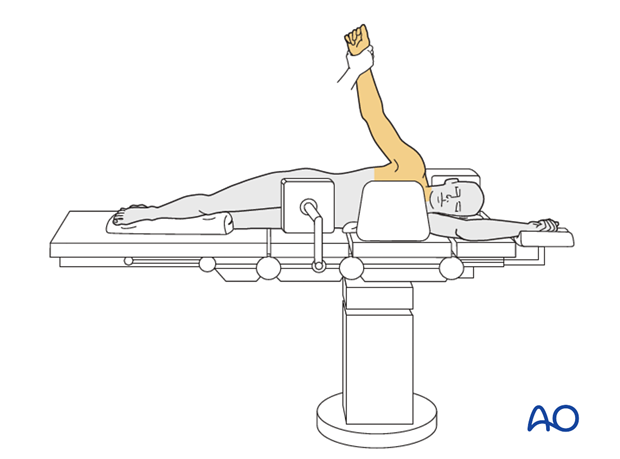
Apply an extremity drape to the affected arm making sure that sufficient coverage is achieved to access the surgical field. Drape the distal forearm with a stockinette and fix it with a tape.
Drape the image intensifier.
Different imaging positions are usually achieved by rotating the image intensifier if positioned parallel to the table.
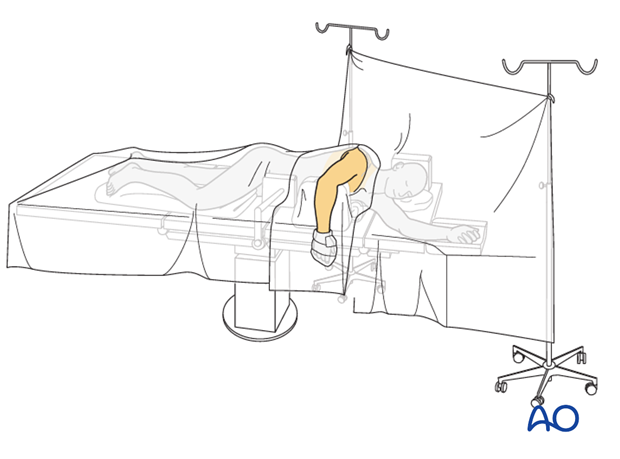
6. Operating room set-up
The surgeon sits or stands adjacent to the patient’s axilla.
The assistant sits or stands opposite the surgeon. They may need to move to allow the image intensifier access.
The ORP is positioned directly in line with the arm between the two surgeons.
The image intensifier is brought in from the head of the table.
It is possible on some pedestal radiolucent tables to bring the image intensifier in from the opposite side of the table so it interferes less with the surgical field.
Place the image intensifier display screen in full view of the surgical team and the radiographer.
